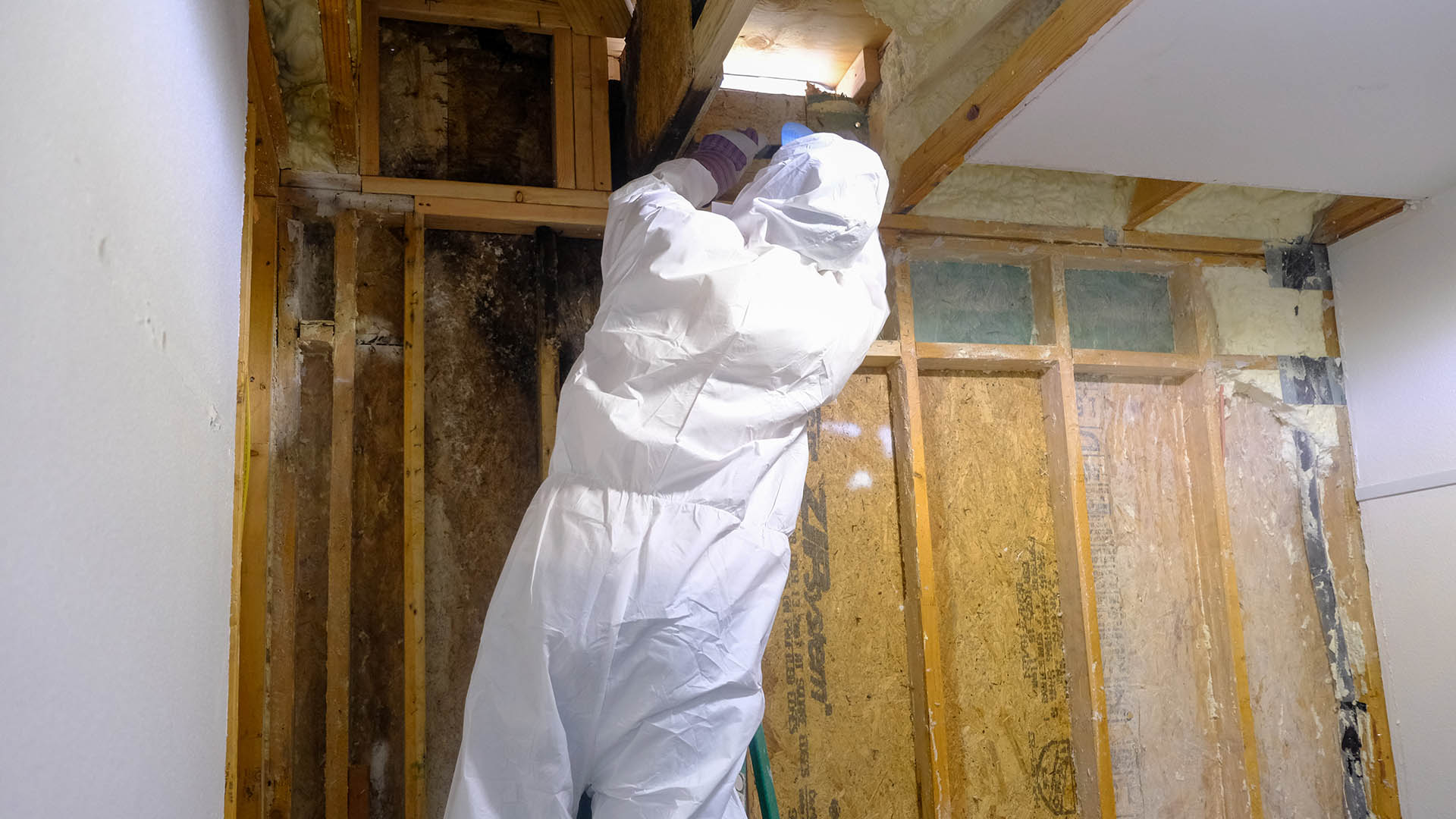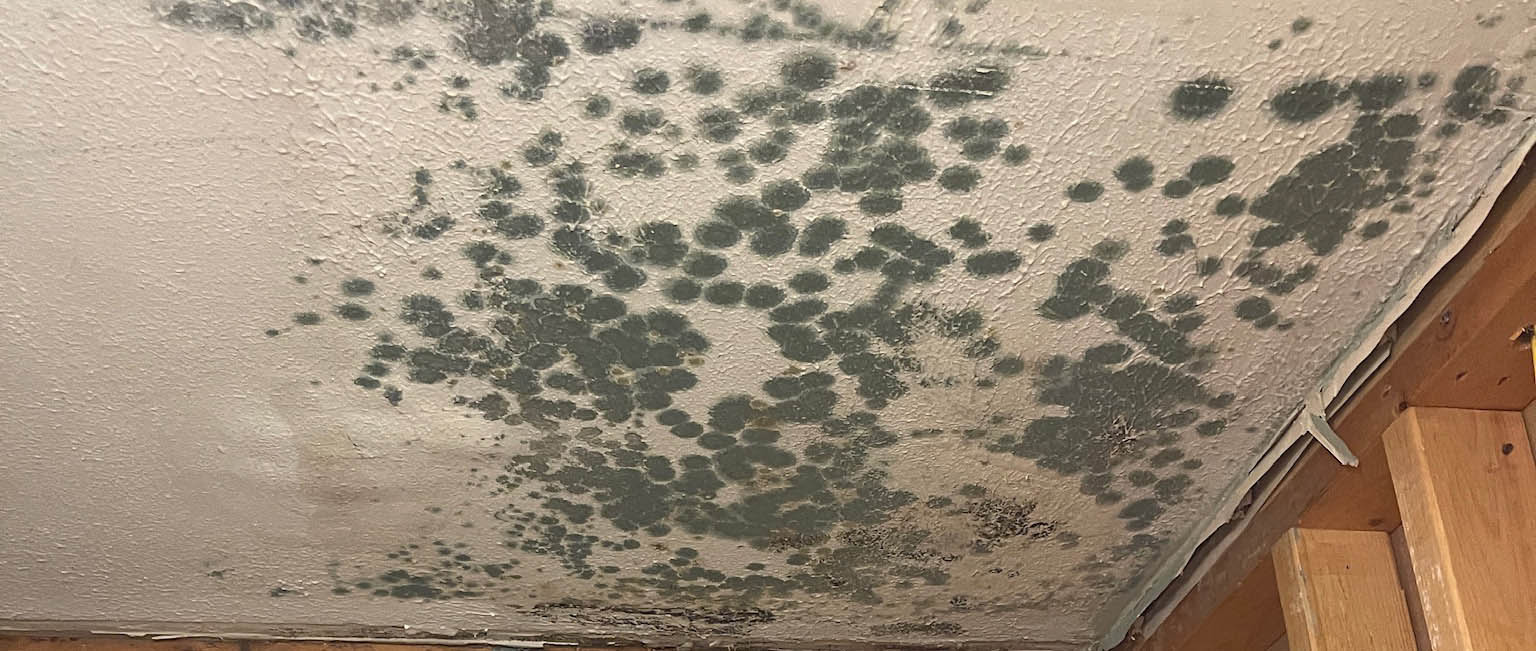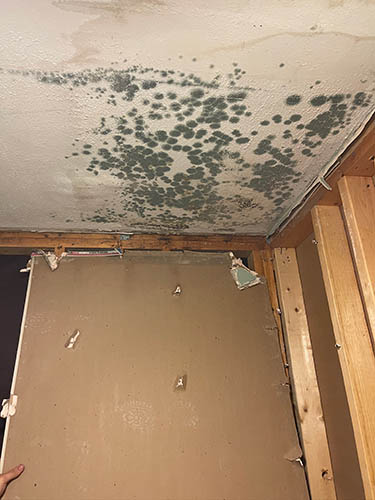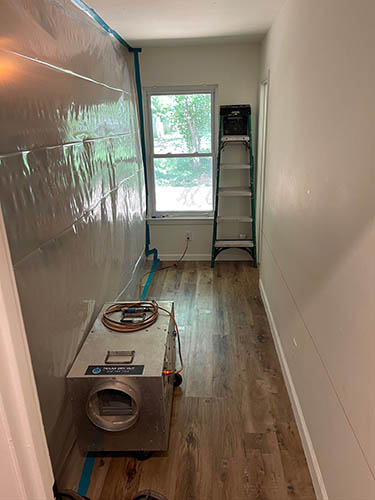
Round Rock’s Number One
Mold Remediation Experts
Mold Remediation
Mold thrives in warm environments like those found throughout any home or business, especially here in Texas.
Does your bathroom smell like mildew? From everyday allergies to serious illnesses, unaddressed mold in your home, condo or apartment can cause significant health problems for you, your family and your pets. At Texas Dry Out & Restoration in Round Rock, TX, we’ve specialized in residential mold removal in Texas for over 20 years. Through a unique combination of expert technical knowledge, superior equipment and careful work, our residential mold remediation technicians have helped thousands of local homeowners and building residents quickly recover from mold damage.
Whether you need us to take care of mold in your guest bathroom or you manage an entire apartment complex in need of mold removal, the Texas Dry Out & Restoration has the extensive experience, local know-how, and advanced equipment for even the most intrusive mold removal in Round Rock, Texas.
We Tailor Our Mold Restoration Service to Your Specific Needs
We understand that every mold issue is unique, which is why we tailor our mold restoration services to meet your specific needs. Whether you’re dealing with a small residential mold problem or extensive commercial mold damage, our team creates a customized plan to effectively address the source, remove the contamination, and prevent future growth.

Our Mold Abatement Treatment Targets the Problem at the Source
In more than 20 years of business, we’ve learned the best ways to keep mold under control. After containing the affected area and removing all contaminated materials, we use a variety of tools and techniques for our mold abatement service, including the following:
- Thermal Imaging
- HEPA Air Scrubbers
- Air filtration systems
- Anti-microbial agents
- Content manipulation
Highly Rated and Accredited
Need emergency services? Get Help Now!
Worried about mold? Let our experts conduct a thorough inspection of all the overlooked areas of your home. Schedule Your Inspection Today!
Hire Your Local Mold Removal Experts
As a reputable mold remediation company in Round Rock, we prioritize the well-being of our clients and take immense pride in the positive impact we make on their homes. Furthermore, our team consists of highly trained and certified experts proficient in all facets of Mold Remediation, from assessing the amount of mold to tackling visible mold growth and concerns about black mold or the type of mold present. With our extensive knowledge, experience, and cutting-edge equipment, we are fully equipped to handle Mold Remediation projects of any size.

If you are seeking reliable and professional Mold Remediation services, look no further. Contact our team of mold specialists today to witness firsthand the significant difference we can make in your home. Trust us to deliver exceptional results and a safer, healthier living space.
FAQ
Got Questions? We Have the Answers!
When it comes to mold removal, many homeowners have common concerns and questions. They often want to know how to prevent mold, how long the mold remediation process takes, the cost involved, and what our specific process entails. At our company, we understand the importance of addressing these inquiries to ensure our customers feel informed and confident about our services.
Our team of experts is not only skilled but also well-equipped to handle any mold job efficiently. We take great pride in our effective and streamlined process. Furthermore, we prioritize close collaboration with our clients to fully comprehend their unique needs and concerns. This allows us to provide affordable solutions that align with their budgetary requirements.
What's Our Mold Remediation Process?
What’s our mold remediation process?
Step 1: Containment
To guarantee the safety and health of our clients during the mold remediation process, we start with containment. By creating a specialized containment barrier and setting up negative air pressure, we prevent cross-contamination and the spread of mold spores to other parts of the house. This crucial first step ensures an effective and safe remediation process, allowing you to return to a mold-free home.
Step 2: Remove all affected porous materials
Once the worksite is properly contained and secured, the next step of our mold remediation process involves the physical removal of all contaminated materials including drywall, paneling, and plaster. In cases where mold is present on foundation walls, we employ a process that includes grinding down and preparing the affected area.
Step 3: Remove all surface mold
Following the removal of all affected building materials, our mold remediation process involves using a specialized HEPA vacuum to eliminate any surface mold.
Step 4: Disinfect all Building Materials
In the fourth step of our mold remediation process, we thoroughly disinfect all affected building materials by spraying and wiping them down with EPA-registered disinfectants until all traces of mold are eliminated.
Step 5: Fogging the Entire Worksite
The fifth and final step of our mold remediation process involves fogging the area with an EPA-registered disinfectant. Once the mold is removed and the affected area is treated, our team will use a specialized fogging machine to distribute the disinfectant in the air. This effectively eliminates any lingering mold spores that may be present, ensuring that all affected areas are thoroughly treated and free from any potential mold spores.
How do you prevent mold growth?
In order to effectively prevent mold growth in your home, it is essential to control both humidity and moisture levels. Excessive moisture in the air or on surfaces provides the perfect breeding ground for mold to flourish.
Here at our company, we understand the significance of addressing both humidity and moisture concerns. To effectively control humidity, we highly recommend the installation of full home dehumidifiers. These advanced devices are specifically designed to maintain a consistent relative humidity of approximately 50% throughout the year. By keeping the humidity levels within this optimal range, you create an environment that is unfavorable for the growth of mold and other harmful microorganisms.
When it comes to tackling moisture issues, we provide a range of tailored solutions that cater to different areas of your home. For basements and crawl spaces, we suggest implementing dewatering systems, encapsulations, and vapor barriers. These effective measures act as safeguards, preventing moisture from seeping into these areas and creating a damp and conducive environment for mold growth.
Similarly, in attics, we emphasize the importance of ensuring adequate insulation and ventilation. Proper insulation helps to prevent condensation and the accumulation of moisture, while sufficient ventilation ensures that any excess moisture is effectively expelled from the attic space. By addressing these specific areas, we create an environment that is resistant to mold growth and promotes a healthier living environment.
Don’t wait until mold becomes a problem in your home. Take proactive measures to control humidity and moisture levels with our specialized solutions. Our team of experts is ready to assess your unique needs and provide recommendations tailored to your situation. Contact us today and let us assist you in creating a mold-free and healthier home environment.
Can I be home during mold remediation?
To ensure the safety and well-being of our clients, we highly recommend that they are not present in their home during the mold removal process. Mold can have detrimental effects on a person’s health, including respiratory issues and allergic reactions. Therefore, it is best to avoid exposure to mold spores during the remediation process. Our team will work efficiently to complete the remediation process as quickly as possible while also ensuring that the area is safe and free from mold. Once the remediation process is complete and the area has been thoroughly treated, our team will conduct a final inspection to ensure that the area is safe for our clients to return. We prioritize the health and safety of our clients and take all necessary precautions to provide a safe and effective remediation process.
Have Another Question? Call Us Today!
Make Your Home Healthier Today!
No matter how much damage your home has sustained, trust our skilled technicians for affordable mold removal in Round Rock. Call Texas Dry Out & Restoration today or submit our quick form online to secure the safety of your home and the health of your family!






